
Costume design in film demands a heightened awareness of all the stylistic nuances that bring a time period or character to life. A character who is deeply individual in her moral and intellectual life, for example, may choose to dress like everyone else because she doesn’t care enough about how she looks to bother looking different. On the other hand, eccentricity of dress may be a sign of social courage or indifference—or merely a conventional way of posing as a rebel because rebellion confers a kind of glamor.
The film director Federico Fellini said, “Charlie Chaplin is a sort of Adam from whom we are all descended.” The film critic Andrew Sarris said, “Chaplin is arguably the single most important artist produced by the cinema, certainly its most extraordinary performer, and probably still its most universal icon.”
Chaplin explained how he selected the costume with which he became identified, “I wanted everything to be a contradiction, the pants baggy, the coat tight, the hat small and the shoes large. I added a small mustache, which, I reasoned, would add age without hiding my expression. I had no idea of the character. But the moment I was dressed, the clothes and the makeup made me feel the person he was. I began to know him, and by the time I walked on stage, he was born.”
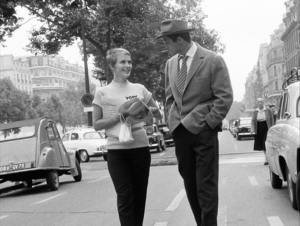
Another brilliant example of the central importance of costume and style in film occurs in Breathless, Jean Luc Godard’s French New Wave masterpiece. Jean Seberg’s jeans and pixie haircut give the film a youthful feel while Jean Paul Belmondo’s fedora and oversized suit help establish his gangster persona.
The cigarette smoke in Breathless signifies the characters’ rebelliousness and gives their conversations and philosophical debates an “existential” quality. The wafting cigarette smoke in Breathless has been described as being almost a “character” in the film.
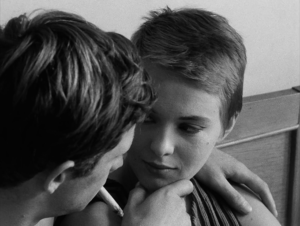
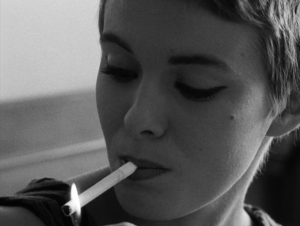
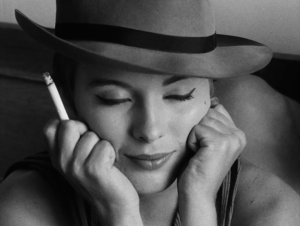
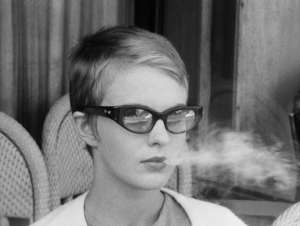
A more recent example of fashion in film, as described in the New York Times article The Sorcerer of Costumes by Rhonda Garelick, is the work of Donna Zakowska in The Marvelous Mrs. Maisel:
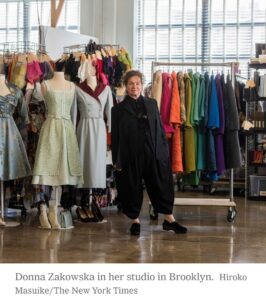
Clothes hold a visceral thrill for Donna Zakowska. “There’s a sensuality and a tactile aspect to fashion,” she said. “I’m always thinking about the quality of the garment, the fabric, the way it plays with light and air and movement — about the emotional impact of color.
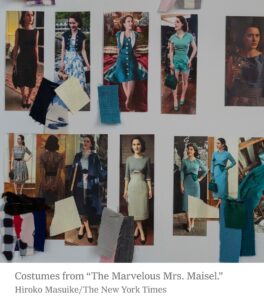
Ms. Zakowska won a 2019 Emmy for designing costumes for The Marvelous Mrs. Maisel, and she has just received her fifth nomination for her work on the series. Her passion for her art is instantly palpable to anyone visiting her workshop at the Steiner Studios in Brooklyn, where much of the show was filmed.

The space is a vast confectionery of the vibrant 1950s-style fashions she created for “Mrs. Maisel”: hats bedecked with jewels or feathers; swing coats in tones of crimson, emerald and teal; racks of suits and blouses. A phalanx of limbless dress forms model some highlights: crinolined day dresses splashed with flowers or polka dots; a Tiffany blue suit with a maroon shawl collar; cocktail frocks in periwinkle and gold printed silk, black crepe and palest green satin, all sparingly accessorized with a single chiffon bow or a slim ribbon belt.
Ms. Zakowska’s dedication to research was evident in the shelves lined with fashion history books and in the giant mood boards covered with vintage magazine clippings, fabric swatches and photographs. Some walls in the studio are papered to the ceiling with her costume sketches.
Her official profession is costume designer, but “world creator” may suit Ms. Zakowska better, given her talent for conjuring character, history, place and stories through vivid, meticulously imagined fashion. She herself seems to exist in a kind of liminal space, poised amid the present and the bygone eras she animates on stage and screen, amid the many characters she coaxes into existence, and amid the many art forms she has mastered.
The Marvelous Mrs. Maisel, became a fashion phenomenon. Vogue analyzed its looks and offered tutorials in recreating them. Bergdorf Goodman installed Midge Maisel-themed windows and an accompanying pop-up store, auctioning off some of Ms. Zakowska’s coats to benefit the Fashion Manufacturing Initiative. The Smithsonian’s National Museum of American History selected two of Ms. Zakowska’s costumes for its collection.
In 2021, she published a thoughtful book about her work on the show. And thousands of “Mrs. Maisel” followers on social media — both men and women — devoted themselves to recreating and photographing themselves in favorite costumes, holding “Maisel festivals,” a sartorial version of fan fiction. This ability to spur a fashion dialogue finds its roots in Ms. Zakowska’s early life and how it informs her design process.
A Bonding Experience
Ms. Zakowska grew up steeped in the communicative pleasures of fashion. Brooklyn-born and raised (she still owns the house where she grew up, in Vinegar Hill), she came from a family of women who loved clothing. “They would shop on the Lower East Side, in these little stores that would have amazing things,” she said. “I think of my grandmother and her two daughters going into those stores and buying clothing together.”
Pleasure and camaraderie remain at the heart of Ms. Zakowska’s work. Costume design is inherently interpersonal, and fittings are delicate in nature. “It’s really a bonding experience,” Ms. Zakowska said. “Someone is exposing themselves to you. You are half psychologist.”
Rachel Brosnahan, who played Midge Maisel, described her relationship with Ms. Zakowska as “symbiotic.” Tony Shalhoub, who played Abe Weissman, said, “There was real dialogue with Donna.” Out of these fitting-room experiences characters are born.
“An actor comes in for a fitting, they may have an idea. But if you are inspired and show them images, they suddenly find a root for the character,” Ms. Zakowska said.
Beyond dressing them, Ms. Zakowska finds she somehow becomes the characters she helps create. “I have to feel the reality of the character,” she said. “You live the characters as a costume designer. You’re many people.” And in living the characters, Ms. Zakowska may be better able to share them with her actors.
This shape-shifting ability may derive from Ms. Zakowska’s background as a performer, but some of her colleagues see something more: a kind of supernatural quality.
Marin Hinkle, who played Rose Weissman on “Mrs. Maisel,” felt nearly magically transformed by Ms. Zakowska’s costumes and described changing from her costume back into street clothes to find that crew members no longer recognized her. “Something about Rose and Donna, and what it became — it was a bit magical,” she said. “Donna is a little otherworldly.” Caroline Aaron, who played Shirley Maisel on the series, put it succinctly: “Donna is a sorcerer!”
If there is magic in Ms. Zakowska’s work, it may reside in the excitement and inspiration she has never stopped finding in color, history, artisanal crafts (she has studied 18th-century men’s tailoring in London, silk flower making in Hungary, among other pursuits) and nature. “I love to look at flowers, at things in nature, at insects,” she said. She finds clothes and fabric especially captivating: “When a garment is in your hands, you should be as excited as you are when you see it in the distance.”
Ms. Zakowska would like to write “a costume designer’s wellness book,” about what she calls the “curative” experience that can occur when you “interpret the human situation with costume.”
If there is a therapeutic aspect to what she does, it surely resides in part in how Ms. Zakowska’s own pleasure, research and deep investment in her designs get transmitted to viewers and actors.
Marin Hinkle said that she keeps photographs from her Paris costume fittings on her phone, “and when I’m feeling blue, I think, ‘I got to go to that costume fitting!’” And Mr. Shalhoub said that he keeps some of his costumes from “Mrs. Maisel” in a special closet in his apartment. He likes “to just open the doors and comb the fabric with my hands. They are like treasures.”
Ms. Zakowska understands perfectly the magnetic and transcendent allure that fashion can offer. “Clothes,” she said, “can be like an exultation.”